Quick Search
Navigation
Featured Articles
- The Monsters of the Wailing Prison
- Strider Review
- BioShock Dev Irrational Fires All But 15 Employees
- New Titanfall Maps Confirmed
- There Are Aliens In Titanfall
- Guide: How to Dominate The Elder Scrolls Online PvP
- The Elder Scrolls Online PvP Experience
- Get Glow-in-the-Dark Condoms For Pre-Ordering InFamous: Second Son
- Batman: Arkham Origins Devs Have No Intention To Fix Bugs - Working On DLC Instead
- 8 Exclusive ESO Screenshots
Call Of Duty: Black Ops 2 Wii U Review
- 11-26-2012
- Categorized in: Reviews, Video Game News

[Note: This is an updated version of our Call of Duty: Black Ops 2 PC review, with several paragraphs of added details at the end reflecting how the game changes on the Wii U.]
Activision's Call of Duty titles have adhered to a pretty rigid formula ever since the seminal Modern Warfare changed shooters forever in 2007. The series' downward trajectory from revolutionary to rote has been a slow but steady one in many gamers' eyes, and while the gameplay at the core of the titles has always remained rock solid, one can't help but feel that the series is in need of a change.

Call of Duty: Black Ops II is that change, and it's the best CoD since Modern Warfare as a result. What Treyarch has managed here is impressive on a vast number of levels; they've taken a formula that has become incredibly popular across the world, changed and improved upon a vast number of the fundamentals that make that formula what it is, and had the end product come out still feeling at its core like a Call of Duty game.
The biggest changes come in the campaign, which is in the running for best in series history. It's plain to see that Treyarch has made a real effort to buck Call of Duty's reputation as "that game where you're always following somebody." Environments are, for the most part anyway, more open than ever before, and allow for more space to come up with a strategy of your own. The funnels ofModern Warfare 3 are rarely present here, and when they do rear their heads, they're in service of some truly great scripted moments.
But it's in the branching story paths that Treyarch has really introduced some meaningful change to the game. Over the course of the game, dozens of your actions will be recorded and measured, and the plot of the game will alter as a result. There are times when the branching paths are so subtle, you might not even realize that the game is tracking everything behind the scenes. Chase scenes, for example, have multiple outcomes for when you catch or kill your target, and when you let them get away.
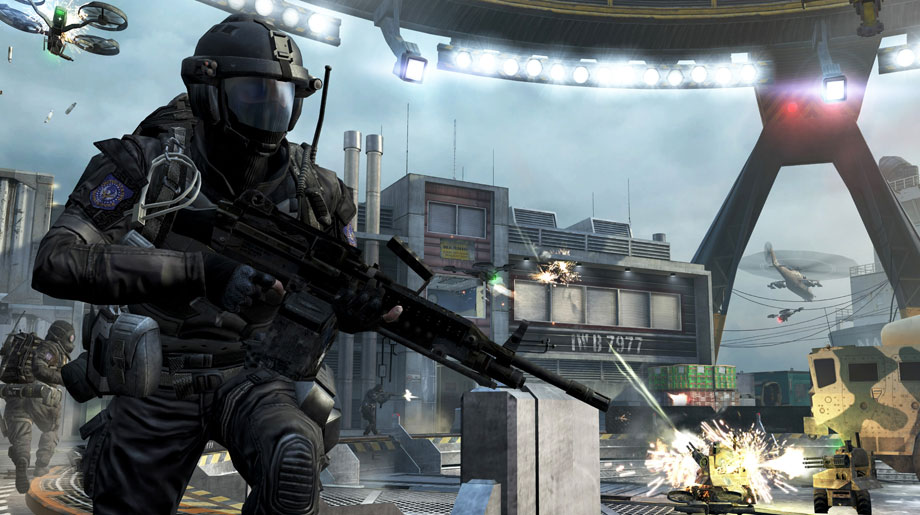
Other examples of branching paths are a bit more obvious. Take the Los Angeles highway seige shown off at this year's E3, for example. In this level, the player is given a choice between sniping targets from above or sweeping up the enemies on the ground. Binary as these choices are, they still serve to add flexibility and replay value to a game that was previously all about the scripting.
The new Strike Force missions serve to add even more variety to the plot. In these odd levels, the game flirts with RTS-style gameplay by placing you in a commander's chair and allowing you to order units around from afar. Alternately, you can jump into a soldier on the ground and assault the enemy from there. If a character dies in a Strike Force mission, they're dead for good. These missions almost always have a huge impact on the way that the story plays out, and although you can choose to skip them, you'll always be saddled with the worst possible result for doing so.
As unique and promising a concept as a pseudo-RTS blended with Call of Duty is, the Strike Force missions are easily the game's weak point thanks to some bum AI, which will frequently run into walls, miss objectives, and generally seek out ways to get itself killed. Your AI soldiers will even ignore the commands you directly give them, which all but inevitably ends in them dying. In the end, this breaks the balance of the Strike Force missions by practically forcing you to take them on from the perspective of a footsoldier.

All of these plot-based choices would mean nothing if the game didn't have a great story to begin with, but luckily Treyarch nails it again with their twisty tale of future espionage and past traumas. It's a surprisingly personal tale, especially given what the rest of the franchise has given us, and massive changes to the presentation allow it to really suck you in unlike ever before.
Gone are the between-mission loading screens, which would usually serve to fill players in on the plot. They're replaced by honest to goodness cutscenes, the likes of which have been heavily revamped and even motion captured to ensure the utmost authenticity. Characters look, move and even sound noticeably better thanks to this new tech, which is combined with scads of professional voice acting to produce a truly absorbing tale which ties into the original Black Ops in some pretty interesting ways.
With the branching paths and absorbing story, you've already got plenty of excuses to revisit the campaign. But Black Ops II's campaign is a much more substantial undertaking than the last few titles have been, and should run you the once-standard shooter length of seven to eight hours to complete just once. Factor in multiple playthroughs to see all of the different endings, and you've got a solid time sink in the single player alone.
Of course, the campaign is but a small part of what Black Ops II has to offer. On the multiplayer side of things, we're still dealing with one of the most complex and fully featured titles on the market. From a gameplay perspective, everything plays out pretty much the same as it did before. The gunplay is snappy, the maps are designed to funnel players into moments of intense and unpredictable conflict, and the killstreaks, now changed to Scorestreaks, keep things fresh and fun for players of all skill levels.
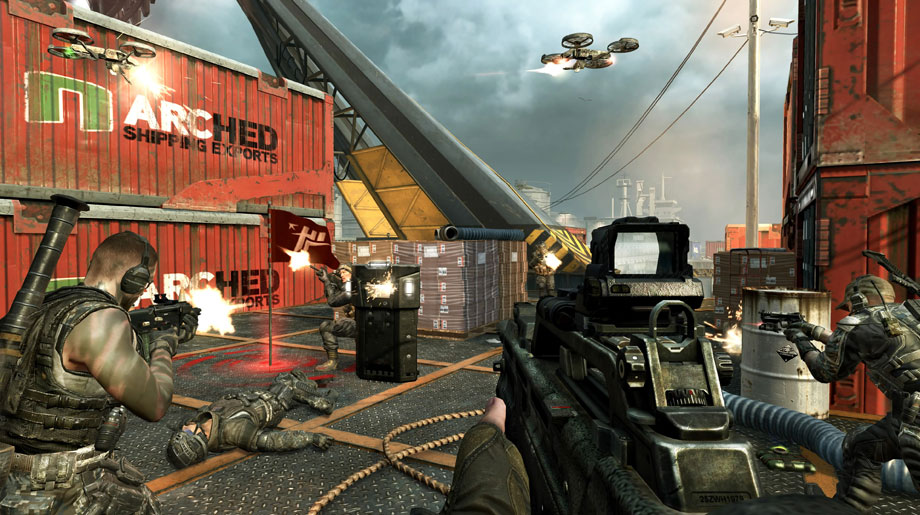
Those Scorestreaks replace the multiple types of streaks available in last year's game. No longer will you be forced to choose between earning streaks for completing objectives, supporting your team or getting kills. Now, all of the above will nab you streaks, but you'll have to work a little harder to get them. 350 cumulative points in one life will nab you a UAV, for example, which typically works out to slightly more than the standard three kills usually required to call one in. It encourages playing as a team and completing objectives intelligently just as much as mindlessly killing your enemies.
The Scorestreaks are nice, but the most significant change to the multiplayer comes in the "Pick 10" system, which Treyarch implements for the first time when choosing loadouts. Instead of being limited to one Perk from each category, a few guns, some attachments and some gadgets, you may now choose freely from all of the above so long as the total number of equips you have equals 10 or less. That means you can have two Perks from the Perk 1 category, for example, or forego a weapon at all and simply carry a knife into battle, bolstered by tons of armor, Perks and gadgets. It's the most flexible Call of Duty has ever been, even if it doesn't necessarily change up the core gameplay all that much.
If competing with other players isn't quite your speed, you can always opt to fend off the zombie hoards with some friends in the revamped Zombies modes. Now, a huge infected world is at your fingertips thanks to the TranZit mode. This sprawling world, made up of various new maps stitched together via bus rides, is chock full of secrets, weapons and power-ups, making it perhaps the biggest time sink of anything in the game for dedicated players.
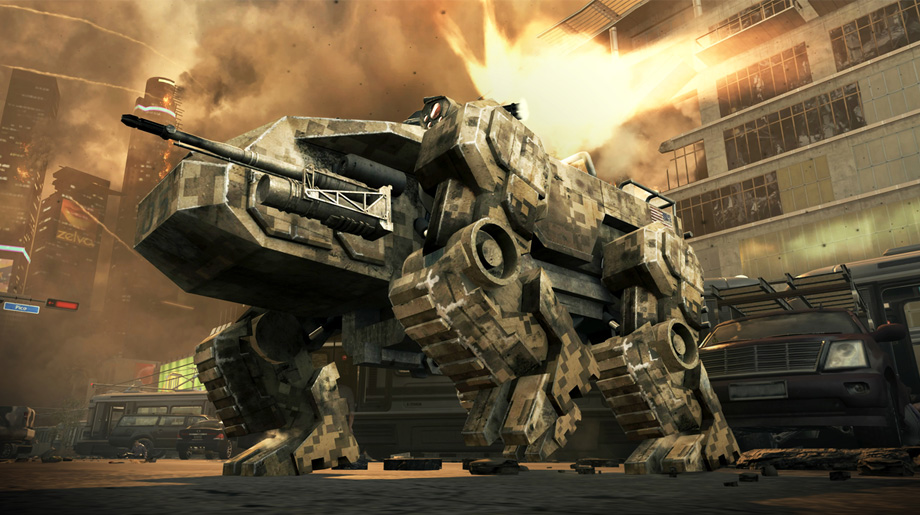
Then there's the Grief mode, which pits players against each other in a game of humans vs zombies. The zombie players have limited interaction capabilities with the humans, though, and it typically ends up with the zombie players trying to herd or troll the humans until they're killed by AI enemies. A new Infection mode is similar in that the human survivors will turn into zombies themselves when they die, giving them chance to mess with the remaining players. It's a fun twist on the classic Survival scenario, which returns itself pretty much as you remember it.
Wii U Changes
The Wii U version of the game has been the subject of much scrutiny and curiousity from the gaming community; it was this curiosity that drove me to grab the game in the first place. I am pleased to say that, having spent significant time with both the Xbox 360 and PC versions of the game, the Wii U version not only stands up to but exceeds those versions in some pretty significant and interesting ways.
Graphically, the game is slightly superior to the other console versions. The framerate, both online and off, is smooth as can be and never dips. Certain textures seem to have been improved in the transition to the Wii U as well. As a whole, it's more on par with the PC version than any other version of the game.
The Wii U's GamePad controller introduces some interesting functionality as well. When playing solo, you can toggle a switch on the GamePad's touch screen which will allow the action to display both on the television and on the GamePad at the same time. This allows for one person to watch television or play another console while you keep on playing on the GamePad. For a game as seriously addictive as Call of Duty, that's simply vital. I found myself wasting away entire nights over Thanksgiving playing the game on the GamePad while my roommates watched television or movies in the background. For serious players, it's a key feature.
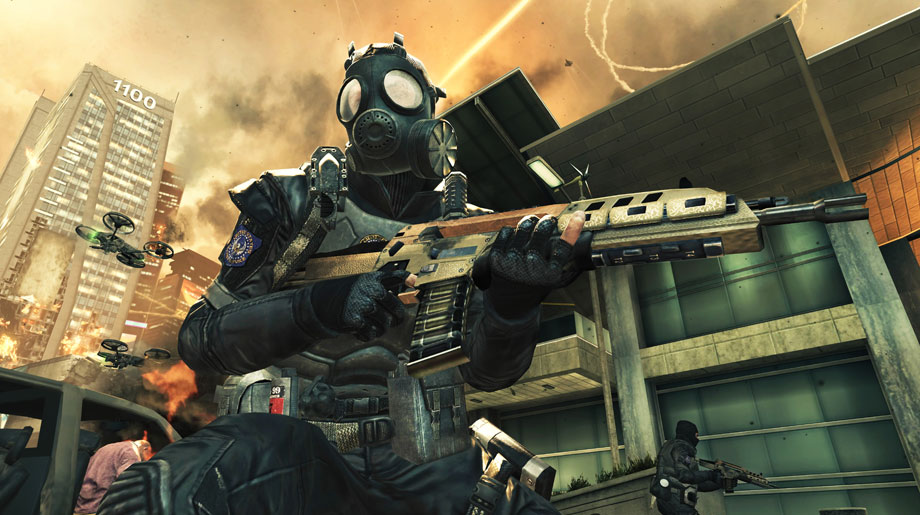
Also fun is the ability to play splitscreen using the GamePad as a second screen. If you have a Pro controller or a Wii Remote on hand, the first player can use those controllers in conjunction with the television while the second uses the GamePad and its tiny screen. This eliminates the problem of screenwatching in splitscreen games, and even allows players to jump online using the format. The GamePad's screen is clear and very high resolution, so it's not like any one player is getting too short of a stick.
For as many improvements as the Wii U version of the game makes, it stumbles in some weird ways too. Long-time Call of Duty players will be fumbling with the GamePad when they first begin the game; for accesibility reasons, Treyarch and Activision have actually changed the layout of the face button controls. This makes the X button jump, the Y button crouch, the B button reload, and the A button switch weapons. In shorthand for Xbox 360 players, that's the equivalent of hitting Y to jump, X to crouch, A to reload, and B to switch your active weapon. The reversal of the crouch function is especially confusing and unintuitive. Luckily, there are plenty of control options in the game's menus. It's just weird that the game would default to such a different and unintuitive control scheme.
The Wii U's GamePad controller itself makes the game more challenging to play in a few ways, too. I found the control sticks to be very subtly less accurate that the Xbox 360's and the Playstation 3's; lining up slow shots in Zombi U was no problem for me, but blating foes at high speed in Black Ops 2's frenzied online modes was notably more difficult. It took a while to get used to, but after around five hours online I was taking enemies down with ease. It's just something that you'll have to take a long time to get used to.

The controller is also weirdly heavy compared to others, especially when held for hours on end. Many people make playing Call of Duty online into a day-long affair, and holding that GamePad for so long can become uncomfortable due to its size and weight. Luckily, Black Ops 2 on the Wii U supports pretty much every form of control compatible with the console, including remotes and various Pro controllers.
Finally, and perhaps most critically, is the limited number of online players. My first night with the game, there was a total of around 600 people online. As in, altogether. Later that night, a mere 250 were online. As the days have worn on and Black Friday came and went, I've found a maximum of a little over 800 players online at any given time.
Just to be clear, I've never had any trouble jumping right into a game of Team Deathmatch. That mode always houses the most players, and if you're in the market for a simple game of Call of Duty you have nothing to worry about at the moment. But more complex game modes like Domination typically hover at around 30-80 total players, enough to find a few matches but hardly enough to inspire confidence that online play on the Wii U will be viable a few months down the road.
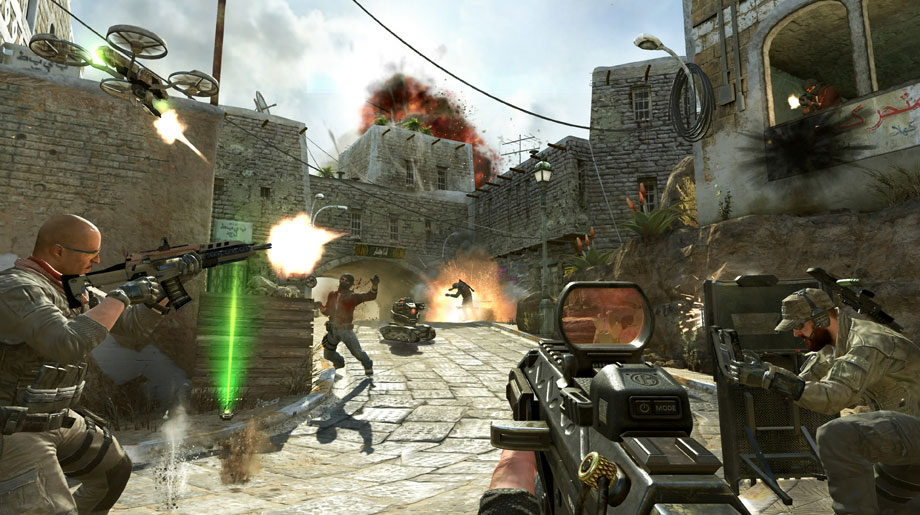
With three completely distinctive, self-contained and masterfully-executed modes of play, Call of Duty: Black Ops II is practically guranteed to entertain everyone still even marginally interested in aCoD title. Lousy Strike Force missions and a mediocre Grief mode are but minor blemishes on what is, in the end, the boldest, biggest and best Call of Duty ever. It's at perhaps its most interesting on the Wii U, with great visuals and some interesting GamePad features lending it an air of novelty and innovation. That said, it's hard not to wonder if playing online with the console will really be feasible in the future with the paltry player counts this game has been racking up. Worrying as it might be, there's no denying that Black Ops 2 on the Wii U is one of the console's most interesting and invigorating launch titles.
Score: 9.5/10
This game was reviewed on the Wii U




